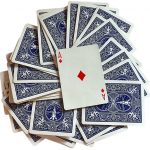The Booker Prize winning debut novel by Arundhati Roy published in 1997 is already termed as a classic.
It is a highly visual story – a beautiful piece of art, in which the artist (author) paints the story, the setting, the characters and their thoughts, with words, rhythm, repetition.
This was my fifth attempt at reading it. In the first four I could not go beyond the first few pages for two reasons, as I look back now;
1. It is an unusual structure – the story begins at the end and ends in the middle (a job only a master can do well). So for a not so mature reader like I was, (I mean a reader – someone who’s mature reader, not by age but by reading), the earlier conflicts don’t make sense.
2. It is a dark, depressing, dirty world (according to me) – the story, which is not my type of reading (for the very reason, I prefer non-fiction to fiction, or used to).
But finally, in my run up to 40, I made it through – through this beautiful novel – which shows very clearly what words and phrases (and their placement, and repetition in the right places) are capable of, and was richly rewarded!
I may not identify with any of the characters or the setting and really was disgusted at a few descriptions (author’s success) that made me want to stop. But partly to my credit and majorly to the author’s, I lasted, till the last page! Yay! And wanted to turn back to the beginning again!
Superlative literary factors:
1. Vivid descriptions of characters and settings
2. Generous us of metaphors (especially to describe feelings and emotions – that makes you feel the feelings, smell the smells while reading it).
3. Engaging all the 5 senses (felt his hands rough, sand paper).
4. Very economical use of words – no over describing. Sometimes the sentences are just a few words (three children on the riverside) and that works beautifully.
‘ He thought as he walked out of the gate. Gate. Road. Stones. Sky. Rain.
Gate.
Road.
Stones.
Sky.
Rain.’
5. Punchlines/ phrases (well made and well placed, repeated throughout the story) – viable, die-able age, orangedrink lemondrink man, POLICE anagram, The God of Loss. The God of Small Things. The God of….,
6. Branding the characters – brings in an element of cryptic (for the readers), mystery in an apparently simple story.
the pair of 2 egg twins, the god of loss, fountain in love-in-tokyo, elvis puff, lucky leaf – an autumn at night – that made the monsoons come on time.
7. Repetition, aptly placed –
Qantas koala with loosened eye button,
8. Pappachi’s moth on Rahel’s heart (stroke of genius!!!)
On Rahel’s heart Pappachi’s moth snapped open its somber wings.
Out.
In.
And lifted its legs.
Up.
Down.
Feel the feeling? Awesome!
I give ‘The God of Small Things by Arundhati Roy (1997)’ 5* simply for the craft and the guts!
It brings forth the dirty secrets, the ugly truths, the inequalities of a society. No wonder it was so controversial, after all who would like to look at an ugly face (without makeup) in the mirror!


